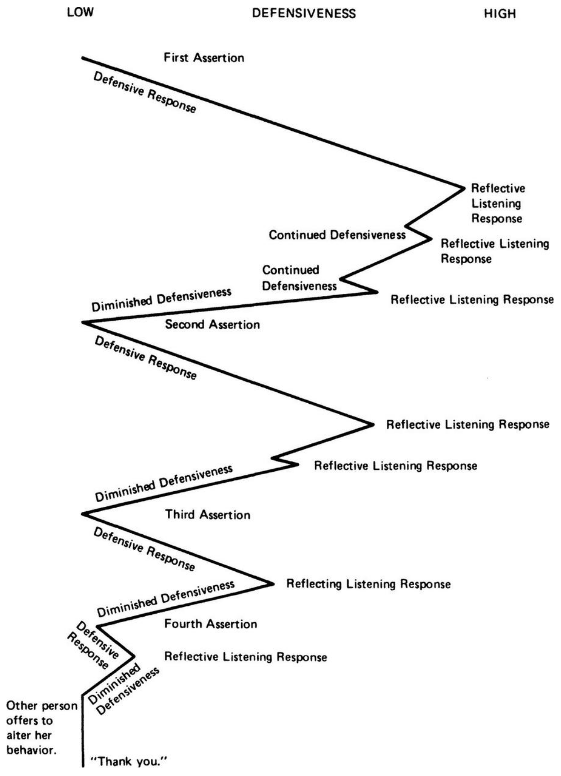
Figure 10.1. The increase and decrease of defensiveness in the assertion process as the asserter “shifts gears” between asserting and reflective listening responses.
…when someone is violating my space, I want THAT behavior changed.
The three-part assertion message… begins with a description of the offending behavior and includes a description of the consequences on your life and how you feel about those consequences.
The three parts of the assertion message are stated as succinctly as possible and are contained in one sentence.
Effective assertion is characterized by firmness without domination. It vigorously defends one’s own space while steadfastly refusing to violate the trespasser’s turf. That is why the three-part message contains no solution. It is up to the other person to figure out how he can best evacuate my space.
Beginners at assertion usually send more effective messages when they use the formula:
“When you [state the behavior nonjudgmentally],
I feel [disclose your feelings]
because [clarify the effect on your life].”
Assert well in one sentence: describe one behavior
First, describe the behavior in specific rather than fuzzy terms.
Second, limit yourself to behavioral descriptions. …behavior… is observable. Anyone present who had sound hearing and sight could have noticed the same behaviors.
Third, make your behavior description an objective statement rather than a judgment. …be sure that no subtle judgmental words have crept in.
Fourth, behavioral descriptions should be as brief as possible. I typically concentrate on one behavior at a time.
Fifth, be sure that you assert about the real issues. …repeated small irritants often grow until they loom large in our feeling world.
Sixth, be sure to assert to the right person.
Assert well in one sentence: disclose your feeling
“When I experienced the negative effect of the other’s behavior, what was the first feeling I experienced?” Often the first feeling is the primary feeling—the one which belongs in the assertion message.
The asserter can increase the emotional accuracy of his statement by selecting from several words of varying intensity to see which best matches his inner feeling. For example, he might try such words as “nervous,” “worried,” “afraid,” or “petrified.”
The more we express our feelings, the more we sharpen our emotional awareness.
Assert well in one sentence: say one tangible effect
“Concrete or tangible effects” seem to be most convincing to people. By concrete or tangible effects we mean those things that unnecessarily cost the asserter money, harm his possessions, consume his time, cause him extra work, endanger his job, and/or interfere with his effectiveness at work.
In most ordinary relationships and in every significant relationship, people trespass on one another’s turf in tangible ways.
The assertion message that cites tangible effects often influences the intangible areas of a relationship.
…a three-part assertion on values issues is never appropriate (in fact, you can never complete the third part—citing a concrete effect of the other’s behavior on your life space). One assertion after another is discarded—as many as half to three-quarters of them—because they fall into the values area and constitute an intrusion on the other person’s space rather than a defense of the asserter’s space.
Effective assertion is open and honest communication.
Assert well by shifting gears: reflectively listen, then reassert
I get down to business quickly. When you send an assertion, your body language should demonstrate that you mean what you say, that you are not ambivalent about it, and that you expect to get your needs met. At the same time, assertive body language communicates respect for the other person.
After sending your brief assertion message with appropriate body language—stop. Be silent.
…it is almost certain that the person to whom the assertion was addressed will make a defensive response. …it is most important to “shift gears” and listen reflectively to the predictable defensive response. As Figure 10.1 indicates, this shifting back and forth between assertion and listening normally takes place several times before the assertion is completed.
As the recipient of the assertion expresses her defensiveness and that is reflected back with respect, her defensiveness subsides. The vicious cycle of increasing defensiveness is broken and constructive conversation can begin again.
The defensiveness-reducing power of effective listening responses is truly remarkable. For many people, it must be seen to be believed.[1]
- Bolton, Robert. People skills. Touchstone, 2009, pp. 262-314.